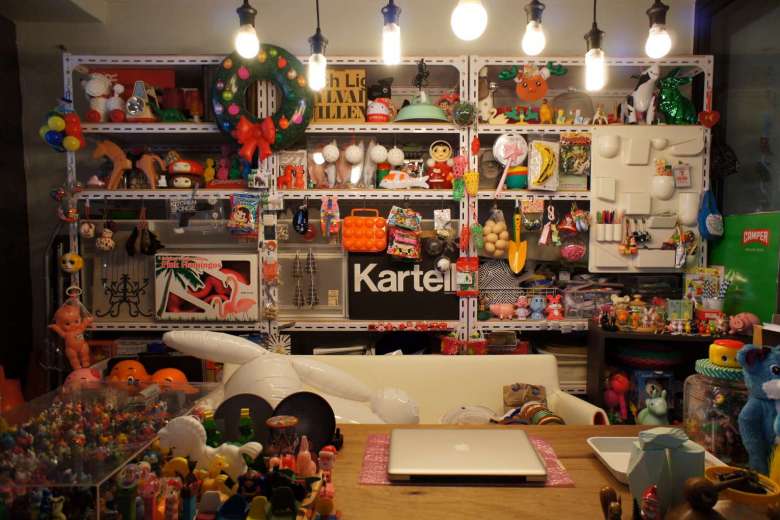Cookie-cutter, confined and sterile – this was the impression Singapore permanent residents Eitaro Ogawa and Tamae Iwasaki had of Housing Board flats a few years ago.
After the husband and wife documented more than 100 HDB homes for their upcoming book, however, they now regard these abodes as vital spaces where Singapore culture is lived and breathed in rich and diverse ways.
Their book, HDB: Homes Of Singapore, hopes to present the country’s public housing flats in this light.
Planned for release next year, the book is a joint effort with Mr Tomohisa Miyauchi, a senior lecturer at the National University of Singapore’s department of architecture.
It features in chronological order the flats that the trio have visited and photographed since 2013, to capture a portrait of life and culture in Singapore.
Mr Ogawa, 42, who has been living and working here since 2001 as a fine art printer, says: “The book is not about presenting nice home interiors. It is about how culture happens in our homes through the way we live.”
The couple came up with the idea for the book in 2008, when they were considering buying an HDB flat.
The semi-detached house they were renting near Seletar Airbase was going to be redeveloped and they needed to find a new home. However, they had reservations about public housing.
Ms Iwasaki, 43, an art educator, says: “We shared our concerns with friends and they invited us into their homes. The flats look the same from the outside, but inside, the difference was dramatic.”
The couple found their friends’ homes to be authentic representations of their distinct personalities and style, and it turned their view of HDB flats on its head.
Inspired, they bought a four- room flat in Bukit Panjang and decided to share their experience in a photo book that subverts stereotypes about HDB flats.
The idea, however, languished because of their inexperience in publishing. It took a fortuitous meeting with Mr Miyauchi in 2013, shortly after he arrived in Singapore to teach, to get the project on its feet.
The three of them were guests at an exhibition and were chatting casually when the couple’s idea came up in conversation.
Mr Miyauchi, 39, who has published books and periodicals on architecture and urban planning, says: “I thought the idea of visiting HDB flats and talking to people is a good way of understanding more about the country, which is important to me as an architect and educator.”
Their aim was to photograph 50 HDB homes and they relied on the help of friends to find willing participants. Occasionally, they knocked on the doors of strangers.
Photographer Deanna Ng, 40, who lives in a three-room flat in Potong Pasir, was introduced to the trio through a mutual friend.
She says: “I have always photographed things that are Singaporean – the markets, Singapore as a Garden City, but nobody was doing what they were. For them to be Japanese and so interested in the subject, I was happy to invite them into my flat.”
At each flat they visited, Mr Miyauchi, who studied film in school, would take the photographs while Mr Ogawa and Ms Iwasaki would chat with the occupants to find out more about them.
Mr Miyauchi says the project is not voyeuristic – the occupants are often not pictured – but rather, a celebration of how people here live.
He says: “What was interesting to see, for example, was how every home had its sacred area, whether it was a shrine for worshipping gods, or a shelf to show off a collection of toys, or a place above a grandfather’s desk that has pictures of his children and grandchildren.”
When they neared their goal of 50 homes, they were inspired to keep going and upped the target to 100. They have since surpassed that number, photographing flats of all types and ages around the island.
They had planned to publish the book last year, in time for Singapore’s Golden Jubilee celebrations, but they were unable to meet the deadline. Earlier this year, however, a selection of their pictures was included in an installation at the Singapore Pavilion at the prestigious 15th International Architecture Exhibition in Venice.
They plan to release the book by next year and are in the midst of raising US$38,000 (S$51,737) through crowdfunding website Indiegogo to print 2,000 copies of the book. They have so far raised about 40 per cent of the sum, with a little more than a week left.
Mr Ogawa says they are committed to publishing the book, even if the total sum is not raised, although there is “good reason to be optimistic”.
He says: “This project had always been beyond us. But what we prayed for has worked out. This book would not have been possible if people did not open their homes to us and that is the beautiful part of involving so many people.”
– To donate, go to www.indiegogo.com/projects/book- project-hdb-homes-of-singapore

This article was first published on July 26, 2016.
Get a copy of The Straits Times or go to straitstimes.com for more stories.










